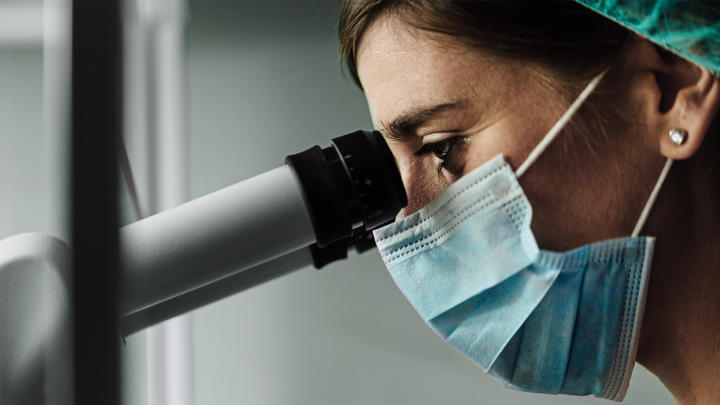First, make sure the clinic is experienced and has a minimum amount of practice. We often look at total cycle volume of a clinic’s laboratory, and tend to push them on quality if they are performing fewer than 200 cycles per year. Using our own data, we notice that clinics doing fewer than 200 cycles per year tend to have slightly lower success rates per IVF patient (69% vs 63%, which meets statistical significance). You can find every clinic’s laboratory volume number at FertilityIQ.
There is a 70 - 80% chance your clinic will want to inseminate your eggs using ICSI, and a 35% chance they will want to test your embryos employing a PGS biopsy. These are delicate procedures, requiring tremendous skill. Ensure the embryologists who will be doing this has enough practice (a minimum of one procedure per day), and has a minimum of two - five years of training.
If you have a male factor diagnosis, there is a 95% chance you will have ICSI performed. Even if you don’t have an MFI diagnosis, there is more than a 60% chance you will have ICSI performed. You want to ensure your clinic has an ICSI fertilization rate of 70% or higher. This means that if they are given 10 eggs, on average, they can properly fertilize at least 7 of them. If ICSI fertilization rates are lower, your likelihood of a successful outcome drops.
Ask the hard questions about the incubators in which your embryos will be cultivated. If the incubators are kept in 20% oxygen, that is a bad sign – this is the case in nearly 30% of US laboratories! Your preference should be that your embryos will be cultivated in 5% oxygen, in “desktop incubators”, and if they are instead stored in “big box incubators,” few, if any, other patients have their embryos also stored in that same incubator. If you can have your embryos stored on their own shelf, that helps, and in many laboratories, the middle shelf is most preferable.
Quantify how good your laboratory is at growing embryos to the stage where they can be properly transferred. Growing embryos to “blastocyst stage” is incredibly hard, and by the time your embryos have spent five days in the laboratory, you’d hope 30 – 40% have reached “blastocyst stage”. By day six, you’d hope that number is above 40%, and maybe even 50%. Some laboratories say they don’t like to grow embryos to blastocyst stage, and would prefer to transfer them at an earlier stage – this is uncommon and should be red flag.
Figure out if the laboratory is understaffed, in which case they are spread too thin, or overstaffed, in which case your embryologist may not be getting the practice needed to keep his or her skills fresh. Ensure your laboratory has at least two well-trained embryologists in case something should happen. The laboratory should have coverage seven days a week, and be working around your schedule, not what is most convenient for them. The average embryologist should be overseeing no fewer than 100 cycles per year. On the maximum end, an embryologist who is overseeing more than 150 cycles per year may be stretched too thin, and unless they are at a large clinic with a lot of support resources, quality might suffer. You can find each clinic’s cycle volume number at FertilityIQ.
What is your clinic’s disaster recovery plan? Nearly 15% of all US clinics are in earthquake zones and in the last decade natural disasters and power outages have struck states that account for 30% of U.S. IVF cycles. As one clinician reminds us, “no lab is earthquake proof,” but there are a lot of steps that can be taken to safeguard your eggs or embryos. Ensure your clinic’s laboratory has a real-time monitoring system to indicate when equipment begins to fail, and uninterrupted power supply if power gets severed.
SART and CDC datasets are minefields, and can be gamed and manipulated. For many patients, the data is unintelligible. For these reasons, both groups caution patients in using this data to compare clinics. The reality is patients do it anyways, and if you’re already of that mind, there are two categories you may want to hone in on.
First, consult the number of embryos a laboratory is transferring per cycle. The greater confidence they have in their embryo quality, the fewer a clinic will transfer, so the closer to one the better. We suggest you filter to exclude PGS/PGD in making the comparison. Below is a comparison of how many embryos, on average, five well-regarded academic hospitals transfer, from high-to-low, stratified by patient age:
Second, consult the success rates of clinics looking solely at their fresh cycles (removes the confounder of PGS) with donor eggs. Donor eggs are theoretically comparable in quality across clinics and thus this level-sets the “input” laboratories have to work with. Below you can see the varying levels of success between two well-regarded, busy, metro clinics.
